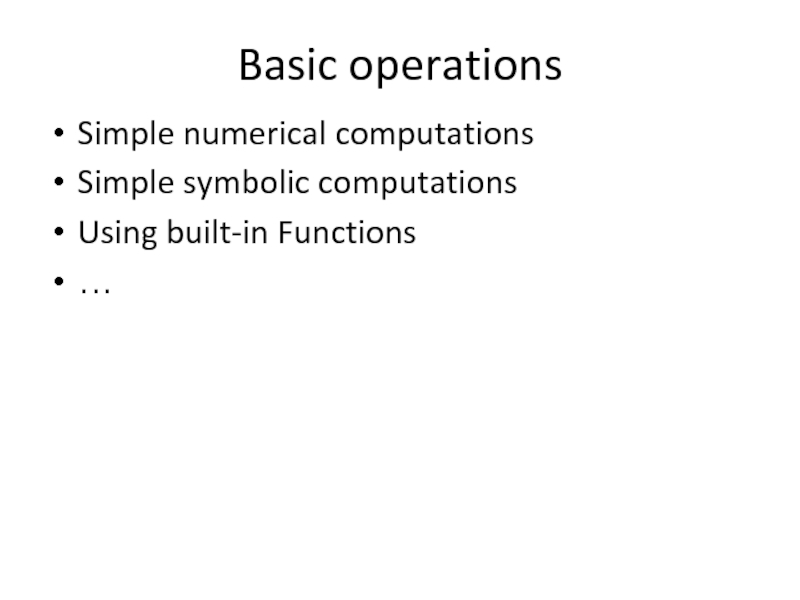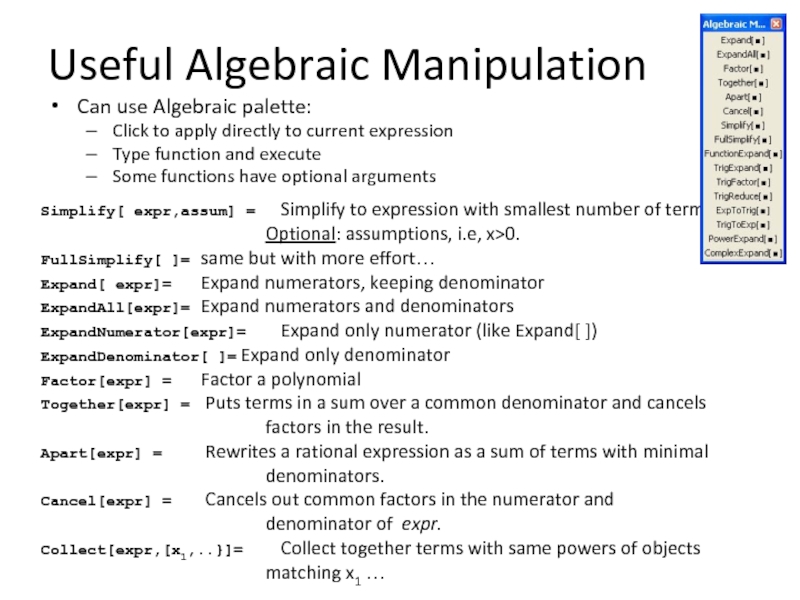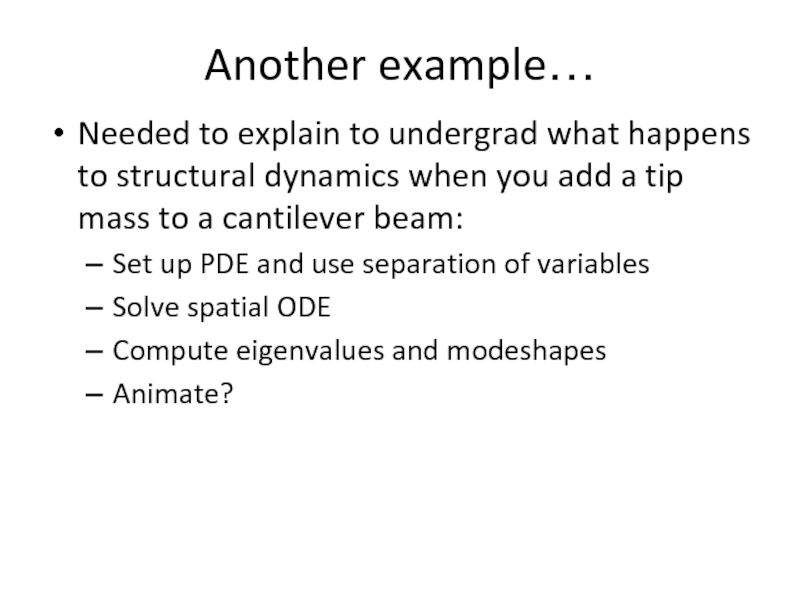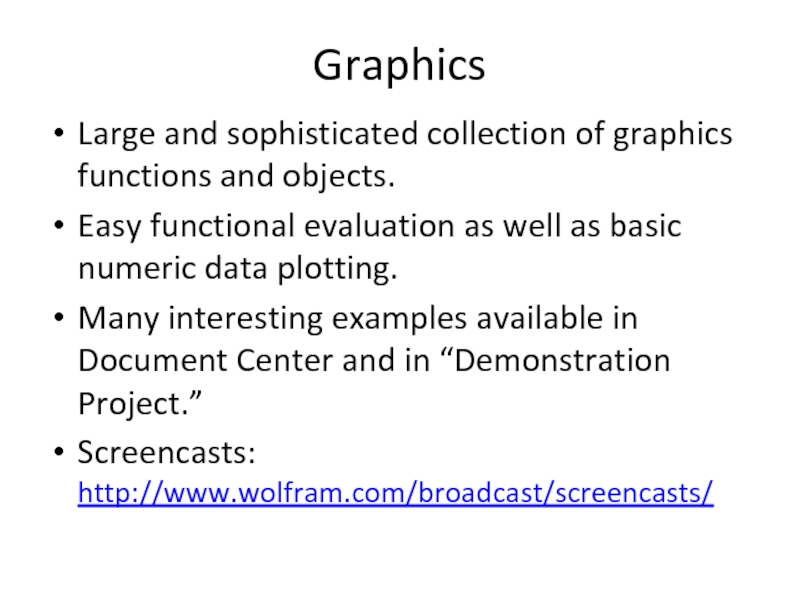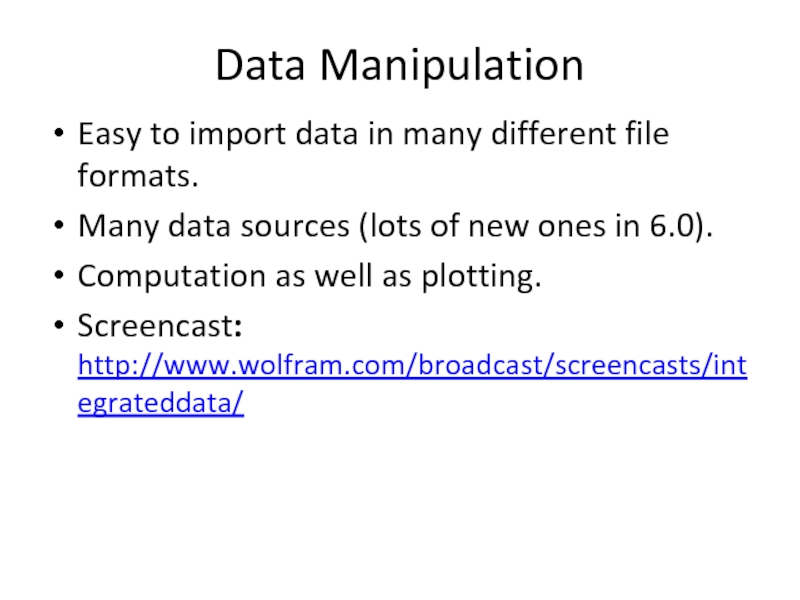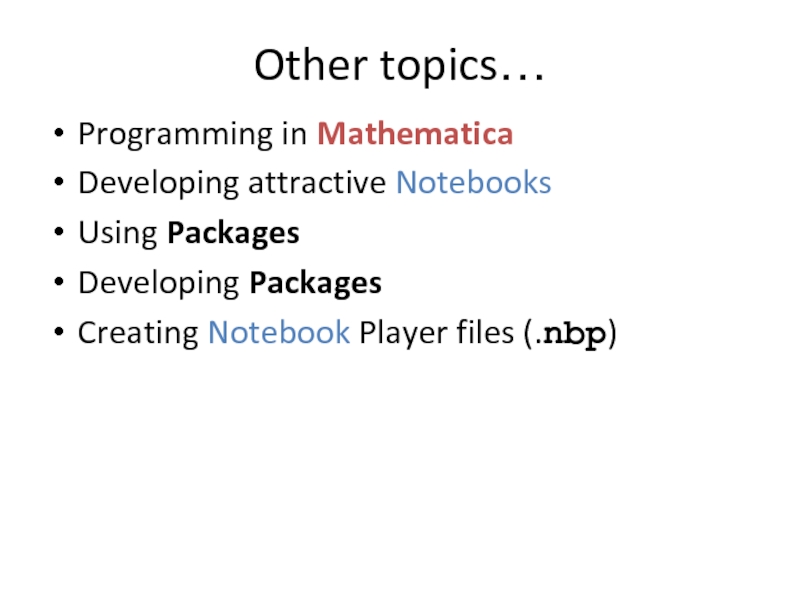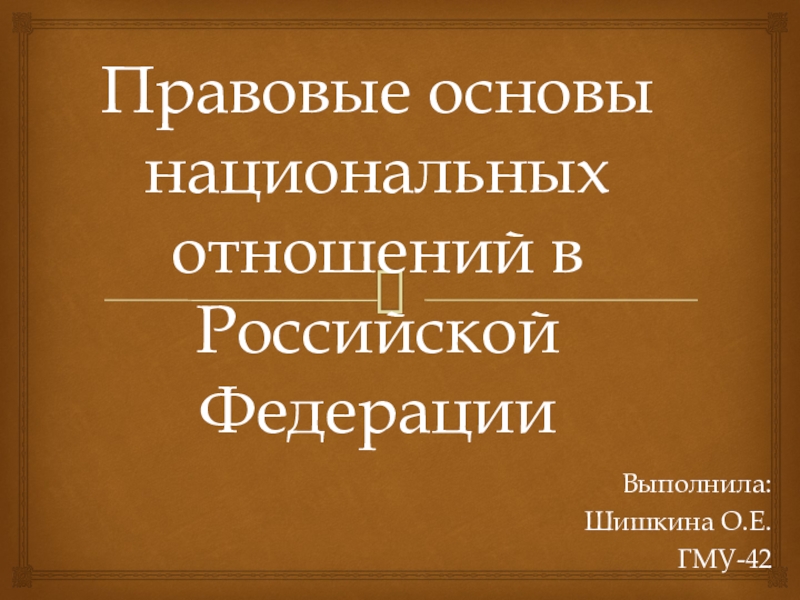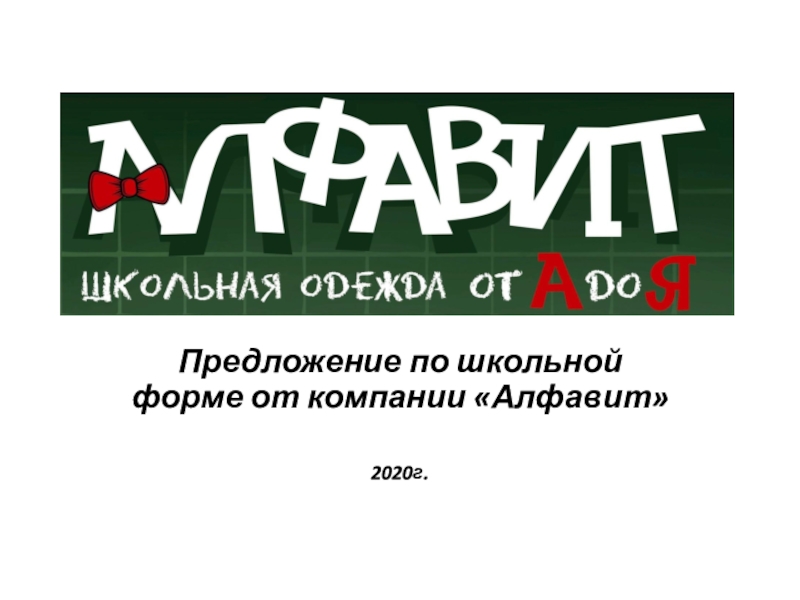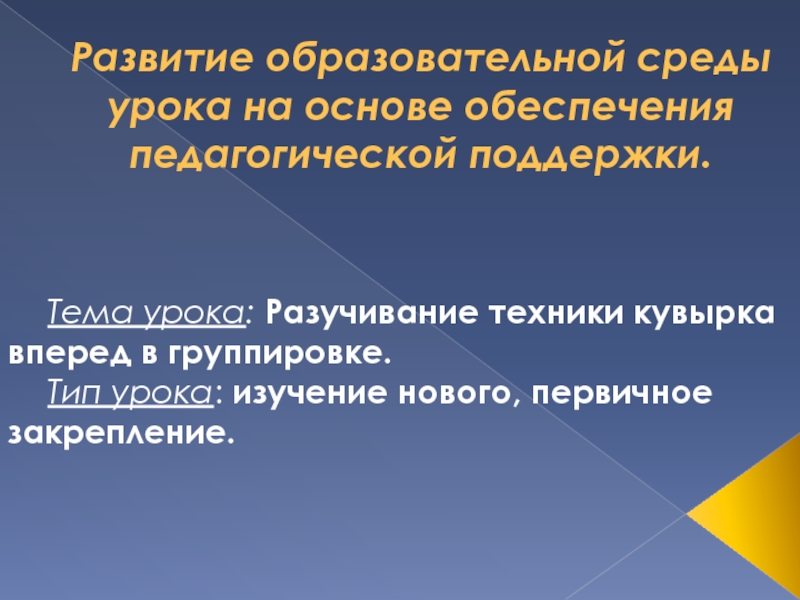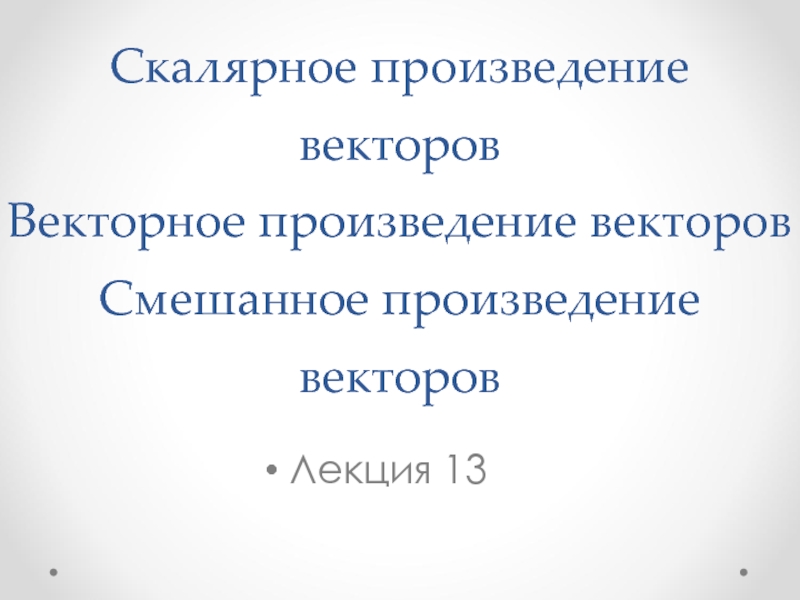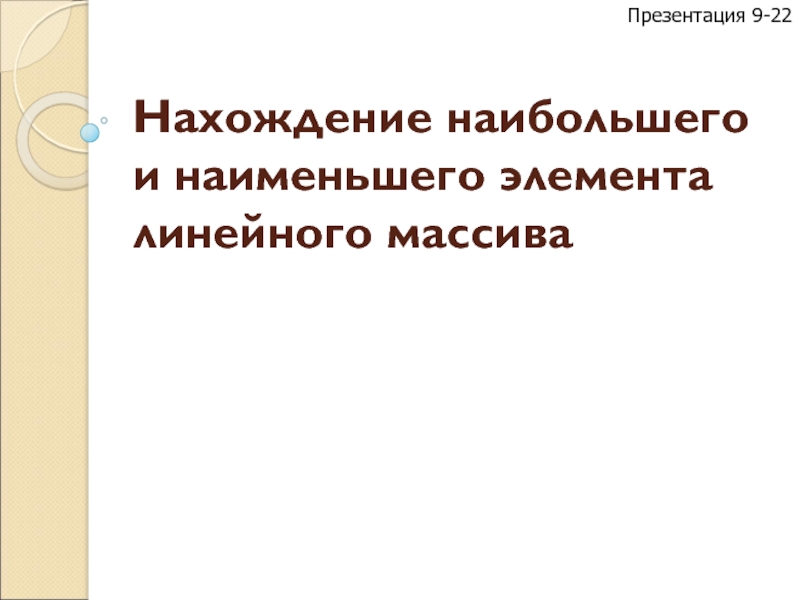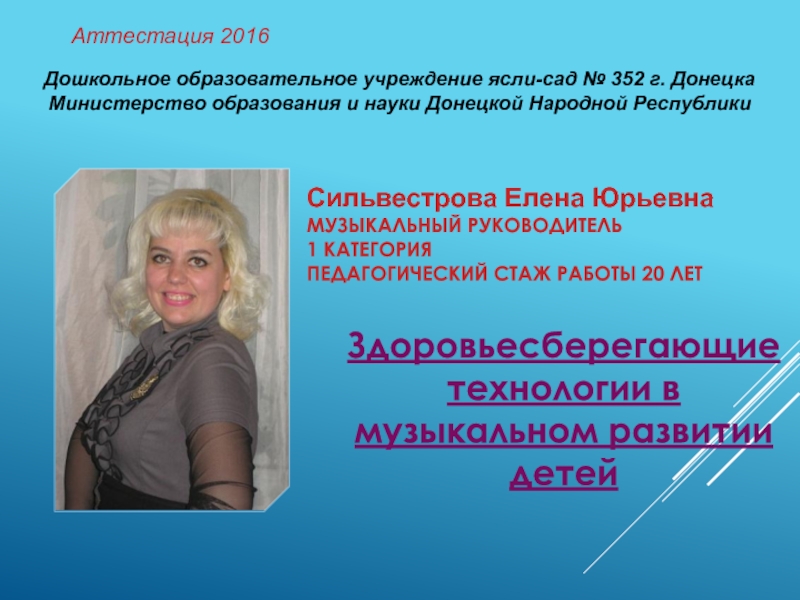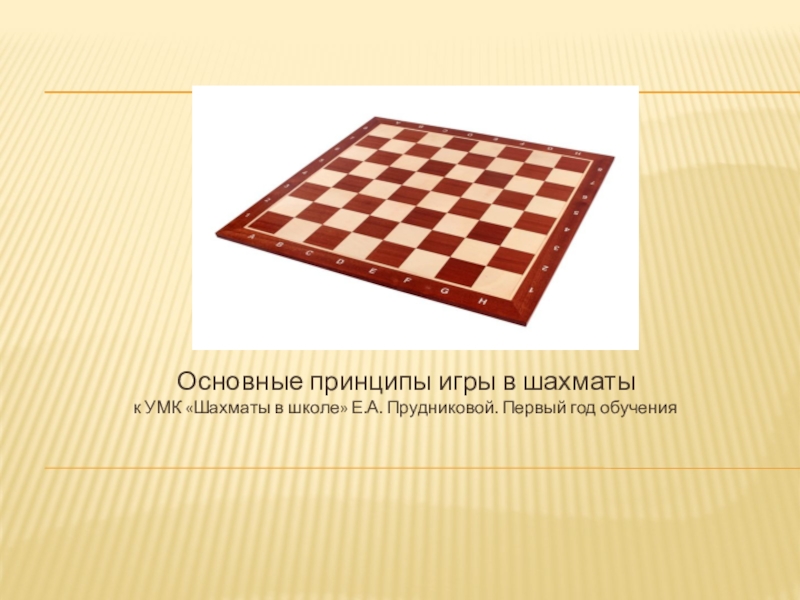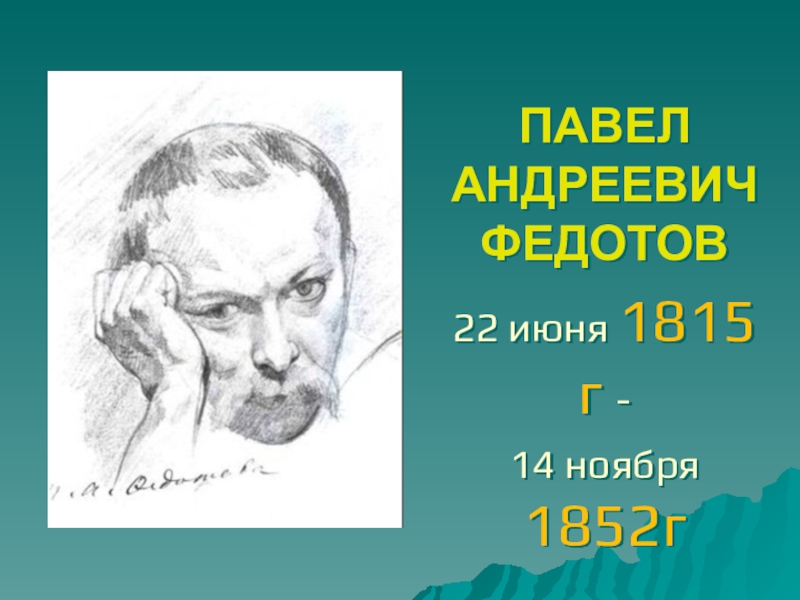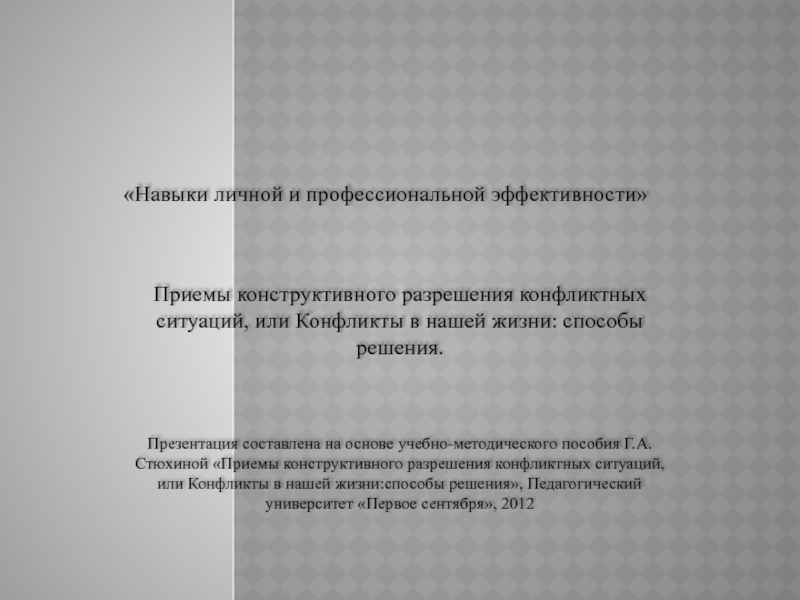Слайд 1Introduction to Mathematica
AE6381 Special Lecture
Prof. J. Craig
Fall 2008
Слайд 2What is Mathematica?
“A system for doing mathematics by computer”
Also for
modeling, simulation, visualization, development, documentation, and deployment.
Available on all public
computer clusters.
Can be installed on any GT-owned computer
Current version: 6.0.3
Versions for:
Windows XP, Vista
Mac OS-X
Unix/Linux
Слайд 3Why consider Mathematica?
Powerful system for symbolic mathematical but also handles
numerical mathematics, graphics, data visualization, simulation.
Larger community of users
than Maple.
Versatile Notebook and Player for flexible documentation & distribution.
CONS:
VERY steep learning curve
Proprietary
Слайд 4What is this introduction?
I’ve been using Mathematica in AE3125 Aerospace
Structural Analysis in order to simplify tedious calculations and solve
problems not readily doable by hand.
All homework solutions are in Mathematica.
I’ll try to provide a simple and very basic introduction using this as my reference.
I’ll suggest other uses and point to the Wolfram web pages and ScreenCasts.
Слайд 5References
Wolfram, S., “Mathematica,” 2nd Edition, Addison-Wesley, 1991.
http://www.wolfram.com is main web
site.
Built-in Mathematica documentation (all written in Mathematica Notebook code)
Tutorial screencasts
are an excellent source of helpful information and can be found at: http://www.wolfram.com/broadcast/screencasts/
Demonstration Project has great user demos at: http://demonstrations.wolfram.com/ (create your own using File>New>Demonstration)
Mathematica Journal at http://www.mathematica-journal.com
Слайд 6Launching Mathematica
User sees the Notebook interface.
An extensive online documentation system
is available.
Palettes
A separate kernel is used for all mathematical
processing
Слайд 7Basic Notebook Operation
Type an expression; default style is Input
Press Enter
(in numeric pad) or Shift-Return which will send Input to
kernel
Result will appear on line below
Sequential line numbers are prepended by kernel
Style determines appearance and what happens to line(s). Input is always sent to kernel.
Styles define appearance of blocks of cells shown by brackets at right margin.
Click cell bracket to select (to change, cut, copy…)
Double-click cell bracket to collapse that cell
Can collapse an entire bracket to the first cell
Слайд 8Notebooks
Provide a very readable display of code along with comments
to fully document
Can collapse/hide portions (styles are useful here)
Layout is
controlled by styles that can be modified by the user to change appearance
Can insert graphics, logos, etc.
Previous output can be saved in Notebook, including plots.
Use Evaluation>Evaluate Notebook to compute Notebook (send code to kernel).
Can also click on style bracket(s) and hit Enter (or Shift-Return) to compute that selected portion of Notebook.
Слайд 9Notebook and Kernel Issues
Kernel retains state of computations and sequentially
numbers all input and output lines.
Must manually clear any previous
variables
Clear[variables] (* clears values of variables *)
x=. (* same as Clear *)
Remove[“Global`*”] (* removes all variables *)
May need to “quit” local kernel to reset counter. See Evaluation>Quit KernelMay also connect to remote kernel(s) for greater power.
Line numbers show calculation sequence…
Слайд 10Using Mathematica
Startup Palette opens in a window by default when
Mathematica is started. Go here for all documentation and help.
All
documentation is in “live” Notebook format and you can cut & paste into your own code.
Good tutorials available.
Слайд 11Useful details…
Use of brackets:
[ ] =function arguments
{ } =defines a
list (can be nested)
[[n ]] =indexes a list (equiv to
Part[ ] )
( ) =groups mathematical operations
N[expr]=numeric value
expr// =operator postfix notation
expr/.x→2 =transformation rule (substitution)
% =previous result (%%=next to previous)
%n =result on Output line n
Слайд 12Basic operations
Simple numerical computations
Simple symbolic computations
Using built-in Functions
…
Слайд 13Useful Algebraic Manipulation
Can use Algebraic palette:
Click to apply directly to
current expression
Type function and execute
Some functions have optional arguments
Simplify[ expr,assum]
= Simplify to expression with smallest number of terms. Optional: assumptions, i.e, x>0.
FullSimplify[ ]= same but with more effort…
Expand[ expr]= Expand numerators, keeping denominator
ExpandAll[expr]= Expand numerators and denominators
ExpandNumerator[expr]= Expand only numerator (like Expand[ ])
ExpandDenominator[ ]= Expand only denominator
Factor[expr] = Factor a polynomial
Together[expr] = Puts terms in a sum over a common denominator and cancels factors in the result.
Apart[expr] = Rewrites a rational expression as a sum of terms with minimal denominators.
Cancel[expr] = Cancels out common factors in the numerator and denominator of expr.
Collect[expr,[x1,..}]= Collect together terms with same powers of objects matching x1 …
Слайд 14Examples from AE3125
Shear flow in a thin-wall cross-section beam.
Function definitions
Symbolic
integration
Plotting
Bending-shear-torsion in a complex thin-wall cross-section beam.
Solve ODE with boundary
conditions
Rotational transformation using matrices
Слайд 15Another example…
Needed to explain to undergrad what happens to structural
dynamics when you add a tip mass to a cantilever
beam:
Set up PDE and use separation of variables
Solve spatial ODE
Compute eigenvalues and modeshapes
Animate?
Слайд 16Graphics
Large and sophisticated collection of graphics functions and objects.
Easy functional
evaluation as well as basic numeric data plotting.
Many interesting examples
available in Document Center and in “Demonstration Project.”
Screencasts: http://www.wolfram.com/broadcast/screencasts/
Слайд 17Data Manipulation
Easy to import data in many different file formats.
Many
data sources (lots of new ones in 6.0).
Computation as well
as plotting.
Screencast: http://www.wolfram.com/broadcast/screencasts/integrateddata/
Слайд 18Other topics…
Programming in Mathematica
Developing attractive Notebooks
Using Packages
Developing Packages
Creating Notebook Player
files (.nbp)
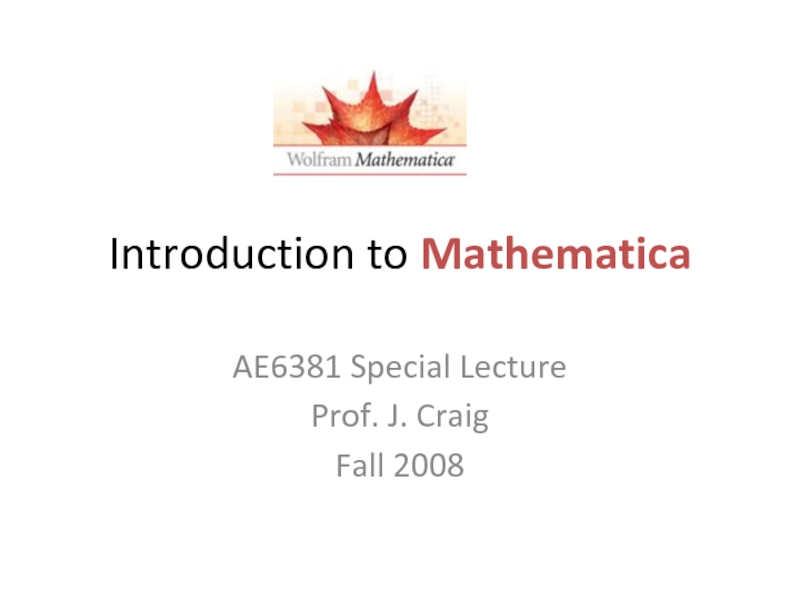
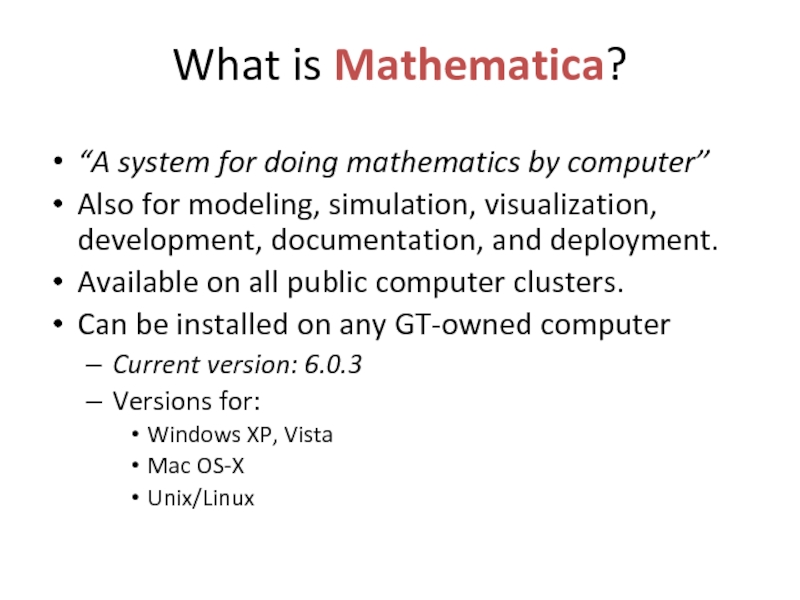
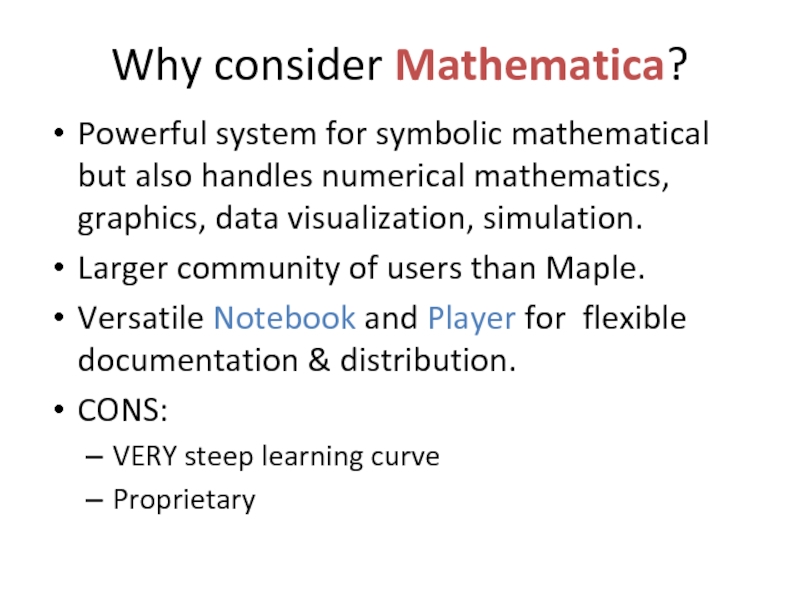
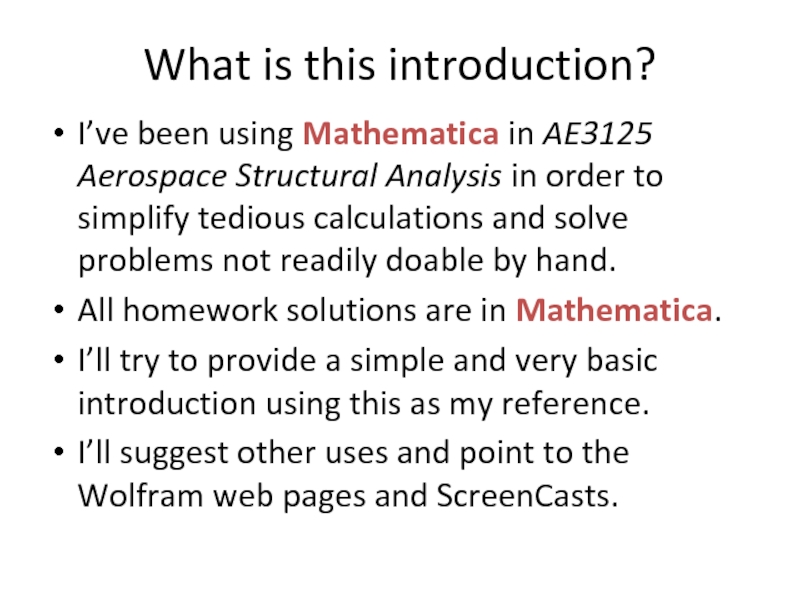
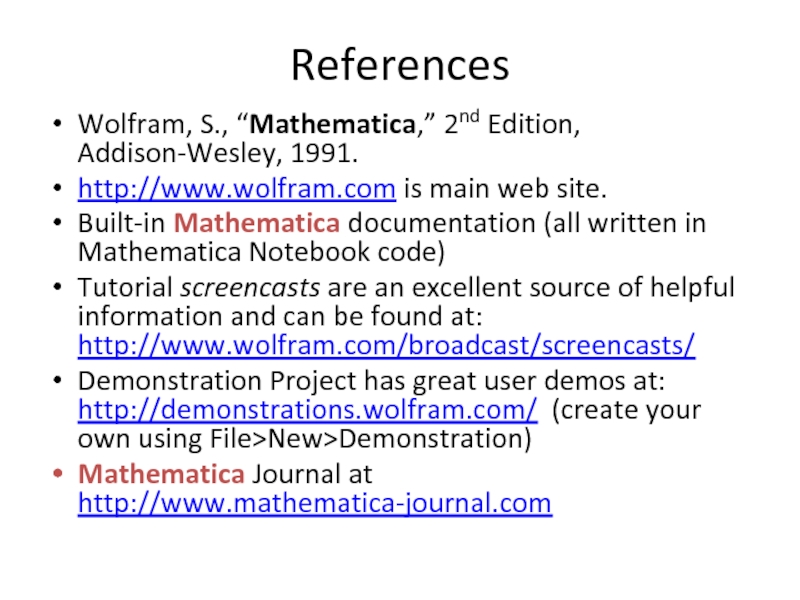
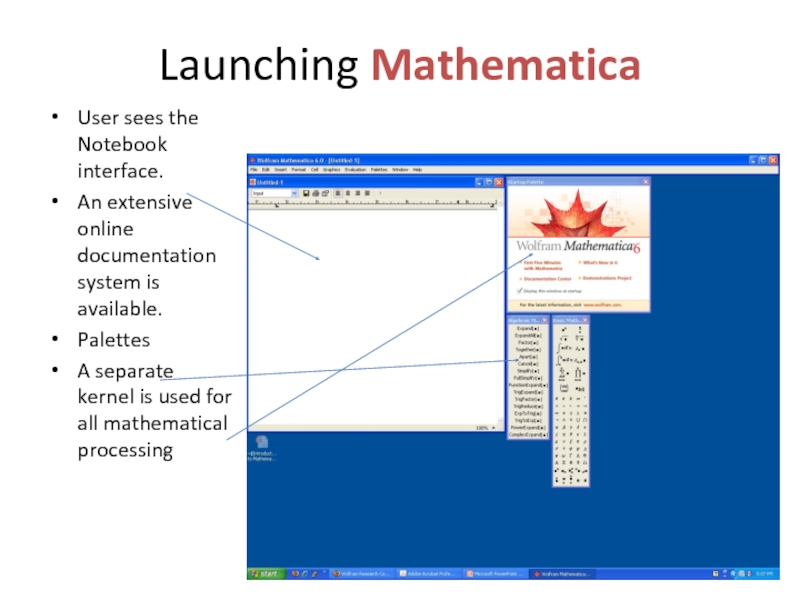
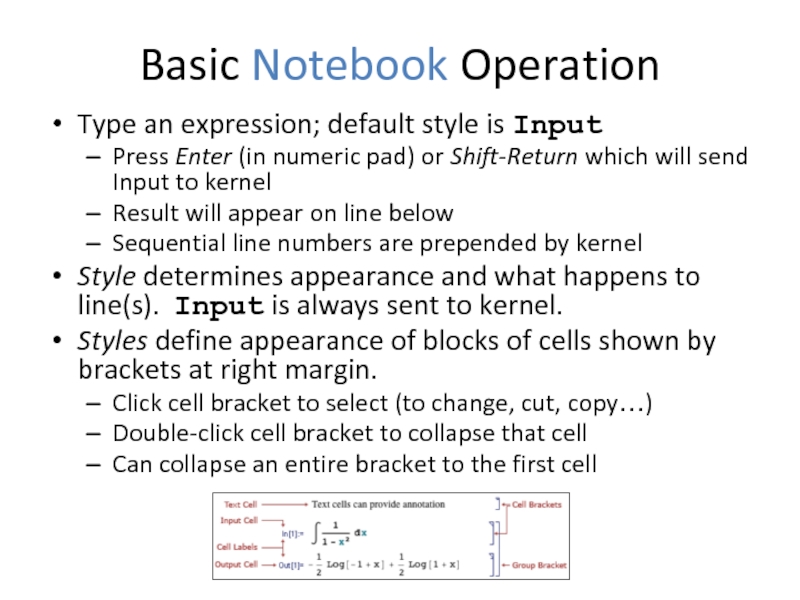
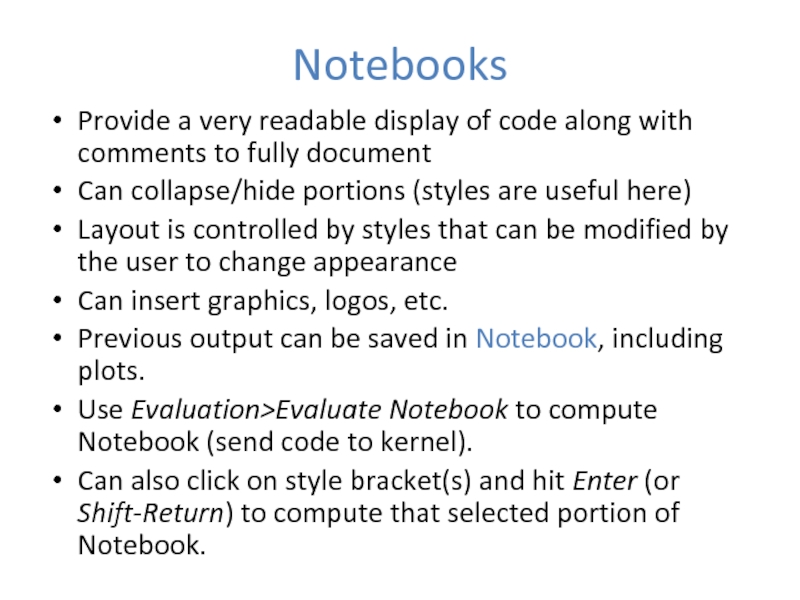
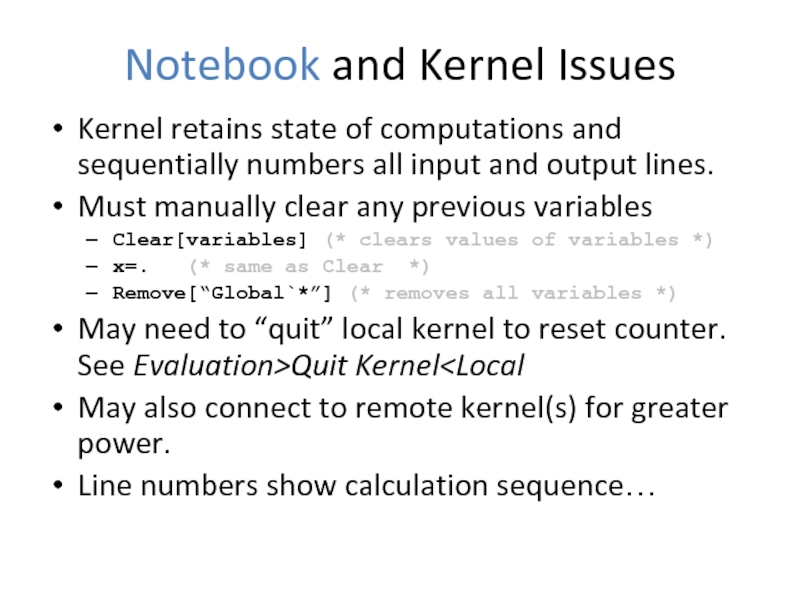
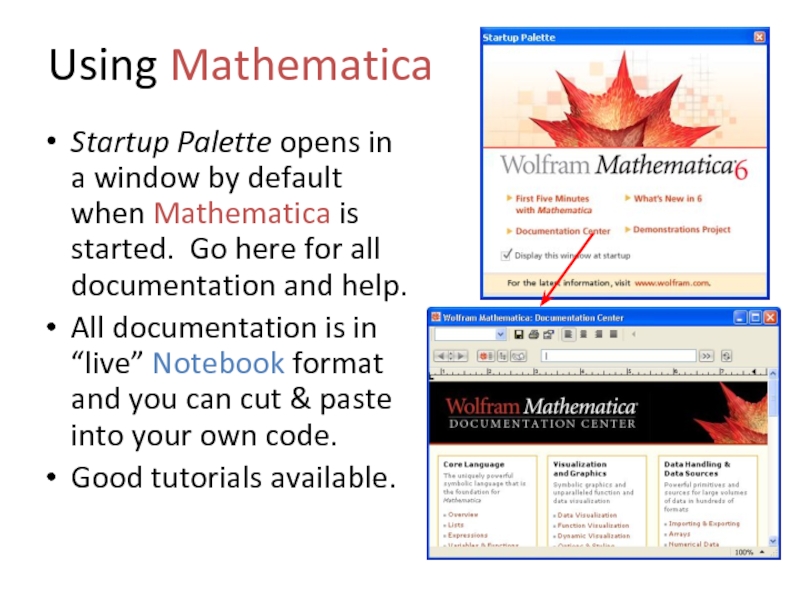
![Introduction to Mathematica Useful details…Use of brackets:[ ] =function arguments{ } =defines a list Useful details…Use of brackets:[ ] =function arguments{ } =defines a list (can be nested)[[n ]] =indexes a](/img/thumbs/8aee7545073177494078034f161751f8-800x.jpg)
